Some roads are more than just stretches of tarmac; they’re stories in motion. These are the historic routes that carried traders, travelers, and dreamers across continents, shaping cultures and sharing ideas as they went.
If you’ve ever moved abroad, you’ll know a little of what that feels like. You bring your own traditions with you, but along the way, you also collect new ones.
At Remitly, we know those cross-border connections are part of what makes your story unique. That’s why we’ve put together this guide to take you through seven of the world’s most famous roads and routes. These incredible journeys might just determine your next travel destinations.
The Silk Road: ancient highway of commerce and culture
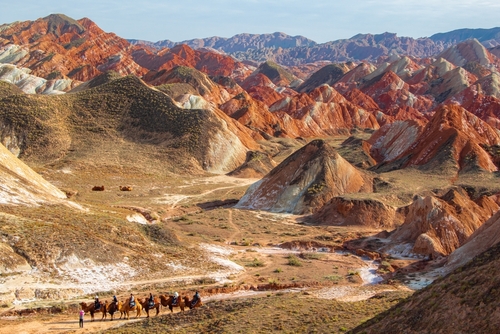
If one road shows that travel has always been about more than getting from A to B, it’s the Silk Road. For over a thousand years, this 4,000-mile network linked China and Europe, carrying not just silk and spices but also religions, languages, and new ideas. In many ways, it was the world’s first global highway.
The Silk Road carried caravans of camels loaded with treasures across deserts and mountains. Cities like Xi’an, Samarkand, and Constantinople (now Istanbul) buzzed with merchants, storytellers, and travelers. Without the Silk Road, Europe might never have discovered paper, printing, or even some of its favourite foods.
Silk gave the route its name, but traders carried much more:
- Luxury goods like porcelain and jewels
- Everyday items such as horses, wool, and grain
- Big ideas, from Buddhism to papermaking
It’s not so different from migration today. When you move abroad, you bring traditions, recipes, and stories with you; the Silk Road did the same—on a massive scale.
The Silk Road today
You can’t walk the full route anymore, but parts of it are open to modern travelers. Uzbekistan, Kazakhstan, and Kyrgyzstan welcome visitors to ancient inns, bustling bazaars, and desert cities still alive with history.
Look for flights to Tashkent or Almaty to start your journey. Modern travelers share their Silk Road adventures online, creating digital caravans that echo the old ones and making it easier to plan your trip.
Route 66: America’s Mother Road to freedom
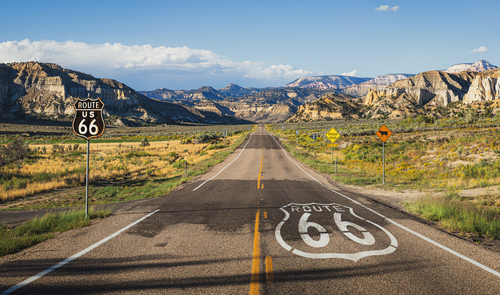
When people think of the open road, many picture Route 66. Opened in 1926, this 2,448-mile highway ran from Chicago to Los Angeles, cutting through eight US states and offering endless possibilities.
A symbol of freedom and pop culture
During the Great Depression, thousands of families used Route 66 to head west in search of work and hope. After WWII, it became the road of post-war prosperity, freedom, and classic American diners. For many, it symbolised a fresh start—something immigrants can relate to well.
Route 66 has inspired songs, films, and even a sense of identity. From “Get your kicks on Route 66” to Pixar’s Cars, it’s a road that feels familiar even if you’ve never driven it.
Nowadays, much of the road has been replaced by highways, but you can still drive sections of it. Quirky roadside stops like Cadillac Ranch in Texas and Santa Monica Pier in California are perfect for your Instagram feed. Don’t be surprised if you leave with a playlist full of American rock classics and a head full of road trip stories.
The Great Ocean Road: Australia’s coastal marvel
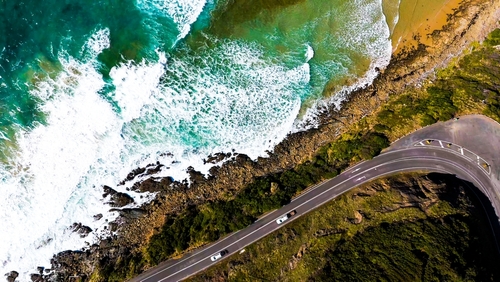
Stretching 151 miles along Victoria’s coastline, Australia’s Great Ocean Road is one of the world’s most scenic drives. Built by returned soldiers after WWI as a memorial to their fallen comrades, it’s also the world’s largest war memorial.
Highlights along the way include the Twelve Apostles (towering limestone stacks in the sea), the dramatic Loch Ard Gorge, and lush rainforest walks. Surf towns like Torquay give the road a laid-back, Aussie vibe. You can spot kangaroos and koalas along the way, making the journey a wildlife experience as well as a scenic one.
Planning your journey
From Melbourne, the Great Ocean Road is a popular weekend escape. The best times to visit are spring and autumn, when the weather is mild and the crowds are smaller.
Renting a car with friends offers the most flexible option for exploring this route, though buses and tours are also available. Travelers on a budget often pack picnic supplies or camp along the way, which keeps costs down while adding a sense of adventure.
The Trans-Siberian Railway route: crossing Russia by rail
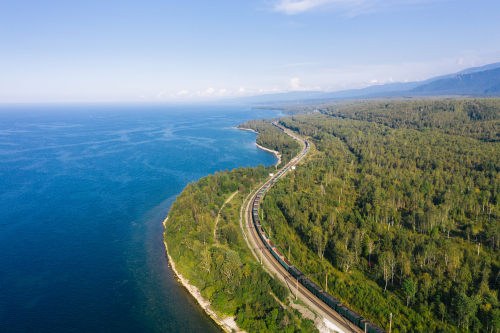
It may run on rails rather than roads, but the Trans-Siberian Railway still earns a place on this list. At 5,772 miles, it’s the world’s longest railway, linking Moscow to Vladivostok and stretching across eight time zones.
Construction of this engineering marvel began in 1891 and took 25 years in total. It opened Siberia to settlement and gave Russia a direct link to the Pacific. At the time, it was hailed as both a political triumph and an engineering feat.
Linking Europe and Asia
For centuries, Siberia was remote and hard to reach. With the opening of the railway, trade, migration, and cultural exchange flourished. It offered a new connection between Europe’s markets and Asia’s resources, paving the way for commerce and cultural exchange.
Today, traveling the Trans-Siberian still offers a true adventure. Stops at Lake Baikal, Irkutsk, and even detours into Mongolia make it a cultural journey as well. You can choose between luxury cabins or economy compartments, making it accessible for different styles and budgets.
The Inca Trail: a sacred path to Machu Picchu
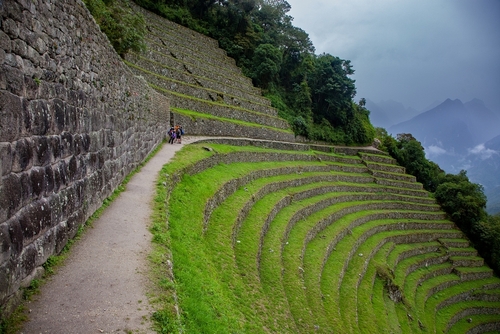
Tucked high in the Andes Mountains, the Inca Trail is one of the world’s most famous hikes. Once a sacred road for the Inca Empire, today it draws thousands of trekkers to Machu Picchu every year.
The trail is part of the Qhapaq Ñan, a vast system of roads stretching across South America. This network provided pilgrimage routes between temples and holy sites, as well as important administrative and military links for the Incan Empire. Soldiers, messengers and merchants traveled these paths long before tourists did, leaving a trail of history to discover.
When Machu Picchu was revealed to the world in 1911, the trail became an instant icon. Suddenly, the Andes weren’t just mountains; they became a must-do adventure on every traveler’s list.
Trekking the Inca Trail today
Permits are limited and sell out fast, so planning ahead is recommended. You’ll need guides, but they also bring the history alive with stories that make the climb unforgettable.
If you’re traveling from another continent, you’ll likely have to fly to Lima and connect to Cusco. It can be a long and expensive journey to get here, but it’s a trip worth saving for. Lots of travelers say that stepping into Machu Picchu at sunrise is pure magic. And if camping isn’t your thing, alternative treks like the Lares or Salkantay routes offer more comfort with the same breathtaking views.
The Pan-American Highway: the ultimate continental connection
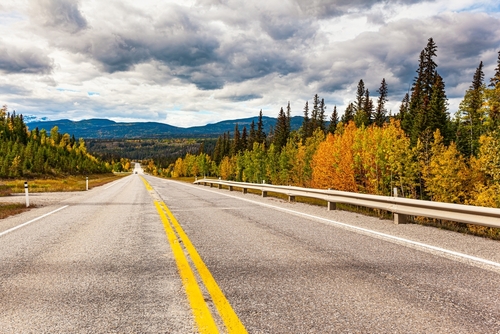
At 19,000 miles, the Pan-American Highway is the longest drivable road on Earth, stretching from icy Alaska to sun-soaked Argentina. It isn’t a single road, but rather a patchwork of routes that stitches together almost every country in the Americas.
This mega-route cuts through mountains, jungles, and deserts, doubling as both a vital trade link and the ultimate road trip challenge. Along the way, it’s helped unite the Americas, fueling not only commerce but also migration and cultural exchange.
Challenges and gaps
Traveling the entire length of the North and South American continents is undoubtedly a major endeavor, which comes with some obstacles. Its biggest hurdle is the Darién Gap, a wild stretch of jungle between Panama and Colombia where the road was never completed due to environmental and political challenges. Travelers have to fly or boat across, proof that even in the age of highways, nature still calls the shots.
Another challenge is the time investment needed: driving the whole route would take months. That’s why most travelers choose highlights: Canada to Mexico for variety, or Chile’s rugged Carretera Austral for drama. Border crossings and paperwork can be fiddly, but for those with patience and a love of adventure, it’s a journey you’ll never forget.
The Romantic Road: Germany’s fairy tale route
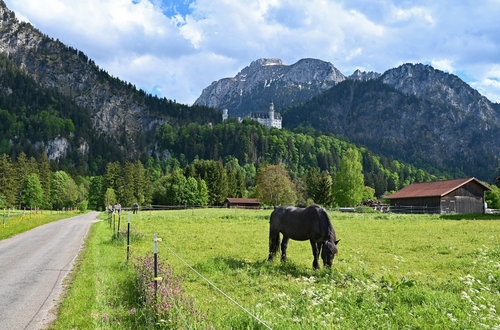
If castles, cobbled streets, and rolling hills sound like your kind of daydream, the Romantic Road in Germany is hard to beat. Spanning 220 miles through Bavaria and Baden-Württemberg, it serves up a slice of Europe that feels straight out of a storybook.
The route was launched in the 1950s to revive tourism after WWII, and it quickly became a hit. Today, it’s one of Europe’s best-loved scenic drives, drawing visitors from around the world with its charm and history.
Highlights include Neuschwanstein Castle (the one that inspired Disney’s Cinderella), the medieval town of Rothenburg ob der Tauber, and vineyards that keep the wine flowing. Travelers often say driving this route feels like stepping into a fairy tale—a rare chance to live out childhood dreams.
Tips for travelers
Spring and autumn offer the best time to travel, as summer can mean crowds and winter can bring nasty weather. Traveling by car gives the most freedom, but buses and cycling tours are great alternatives, too. To start your journey, fly into Munich or Frankfurt, then rent a car or meet up with your bus from there.
Choosing your route
If you’re drawn to history and culture, the Romantic Road, Silk Road or Inca Trail might be your match. If it’s wide horizons and a taste of nostalgia you’re after, Route 66 or the Great Ocean Road are road trips made for you. And if adventure is your thing, the Pan-American Highway or Trans-Siberian Railway promise challenges and unforgettable stories.
Whichever you choose, these routes aren’t just about miles traveled but memories created. These journeys will connect you with the explorers, migrants, and dreamers who traveled the same roads for centuries. Whether it’s hiking the Inca Trail or driving the Romantic Road, your next adventure is waiting.
FAQs
How do historic roads influence modern travel patterns?
Many modern highways follow ancient paths. The Silk Road shaped trade routes that still exist today. Additionally, historic routes like the Inca Trail provide a major pull for modern tourism.
What makes a road or route historically significant?
A mix of cultural impact, economic importance, and lasting influence make a route significant. If it shaped migration, trade, or identity, it earned a place in history.
Are these famous routes safe for modern travelers?
Most are safe with planning, but conditions vary. Always check travel advice, pack essentials, and research local rules before setting off.
How has technology changed travel along these historic routes?
From maps to GPS apps, technology has made navigation easier. Online guides and digital communities also help travelers share tips in real time.
What’s the best time to travel these routes?
It depends on the climate. Europe, Asia, and Australia are best during spring and autumn, whereas South America is best during the dry season (May–September).